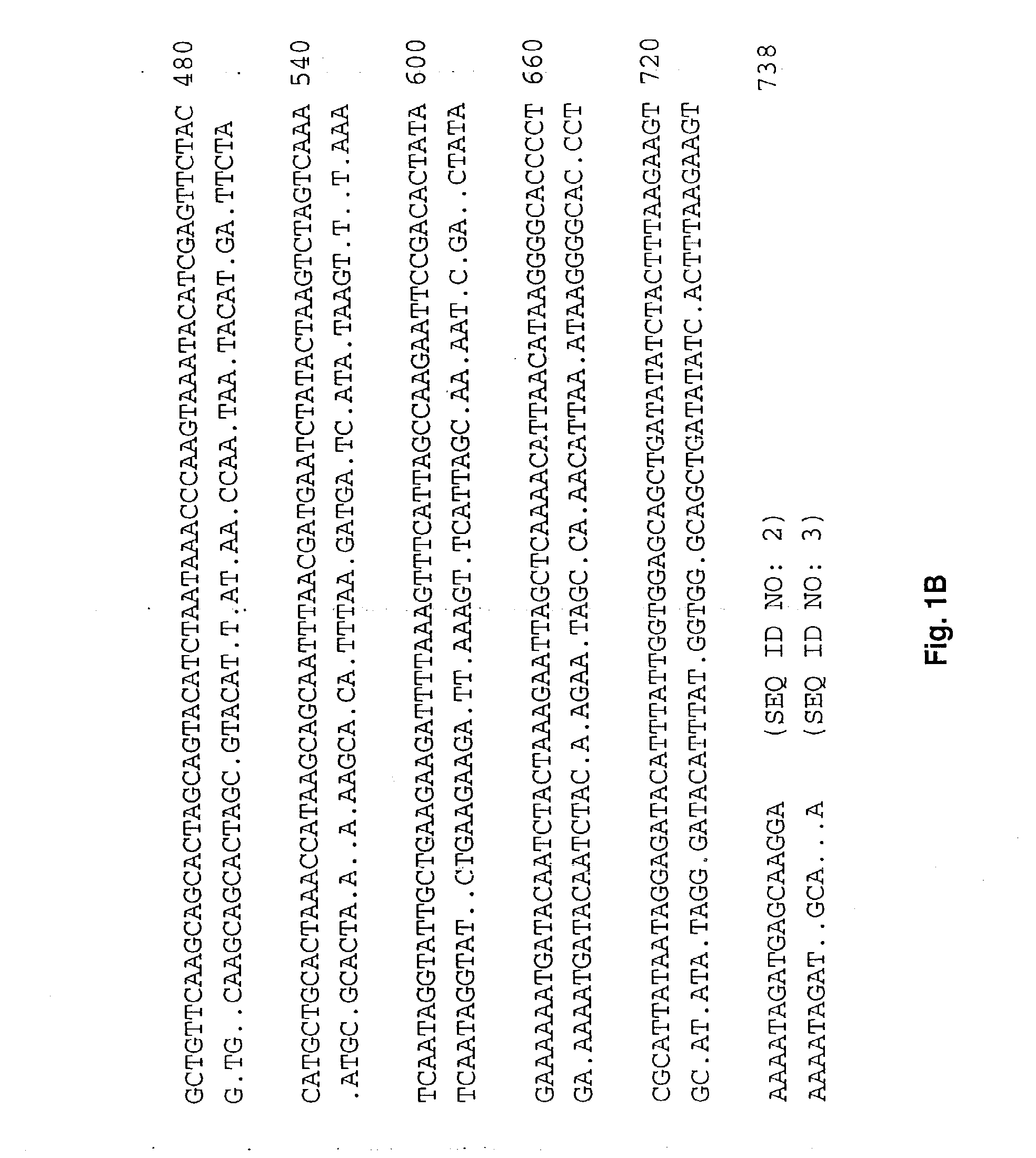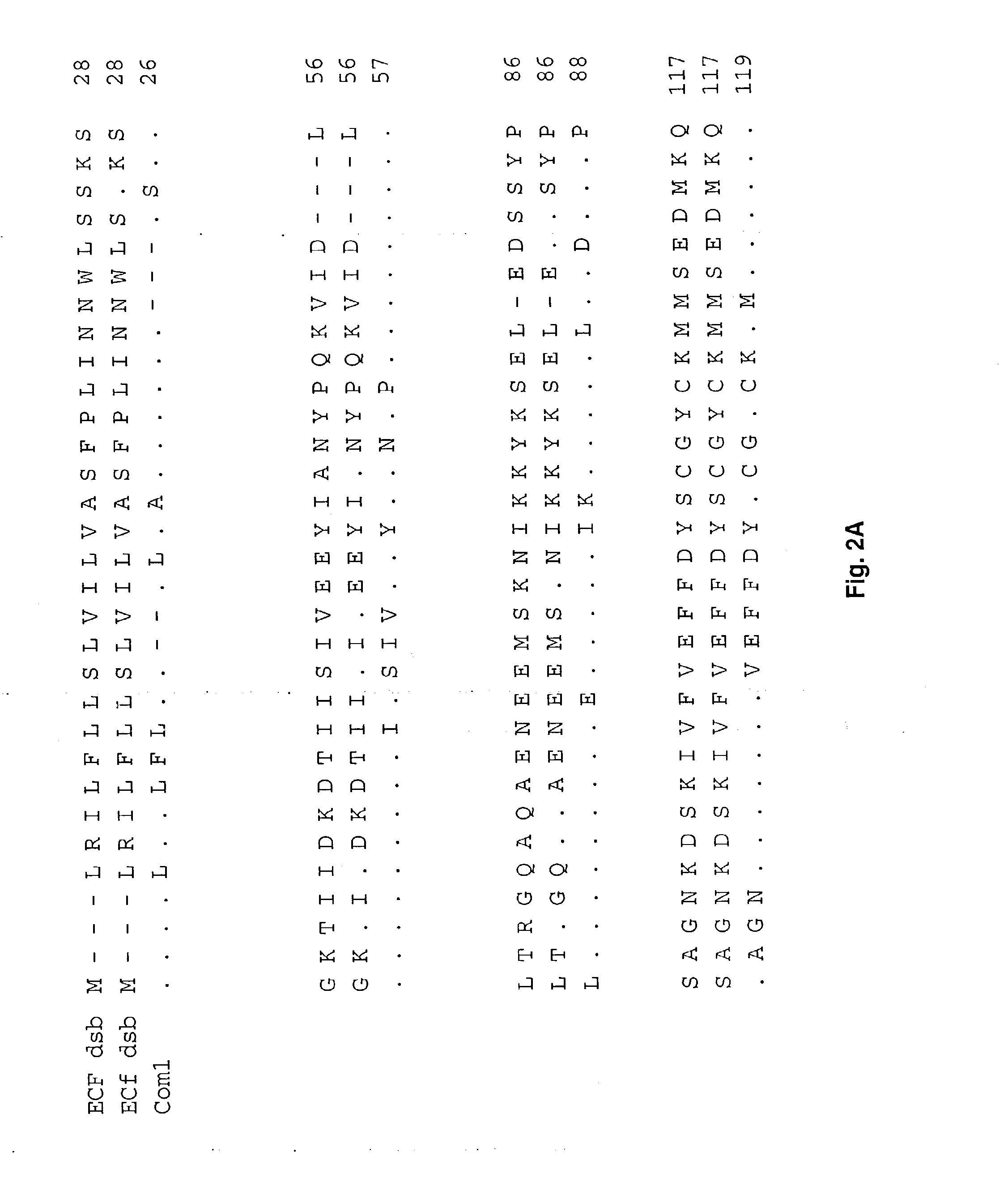Ehrlichia disulfide bond formation proteins and uses thereof
a technology of disulfide bonding and ehrlichia, which is applied in the field of bacterial genetics, immunology and microbial pathogenesis, can solve the problems of deficient knowledge of thio-disulfide in the early ar
- Summary
- Abstract
- Description
- Claims
- Application Information
AI Technical Summary
Benefits of technology
Problems solved by technology
Method used
Image
Examples
example 1
Ehrlichia and E. coli Strains
[0073]Ehrlichia chaffeensis Arkansas strain and Ehrlichia canis Jake strain were provided by Jacqueline Dawson (Center for Disease Control and Prevention, Atlanta, Ga.) and Dr. Edward Breitschwerdt (College of Veterinary Medicine, North Carolina State University, Raleigh, N.C.) respectively. Ehrlichia were propagated and purified as described previously (7). E. coli strains JCB502 and JCB572 (JCB502 dsbA::kan1), kindly provided by J. Bardwell (University of Michigan), were used in the complementation experiments as reference and mutant strains, respectively (1). E. coli were cultured on LB medium at 37° C.
example 2
Isolation of E. canis and E. chaffeensis dsb
[0074]The E. canis dsb was identified by immunologic screening of a Lambda Zap II E. canis genomic library. Construction and screening of the E. canis genomic library has been described previously (7). Primers used to amplify the E. chaffeensis dsb gene, including forward primer p27nc42 (5′-GAG ATT TCT ACT ATT GAC TTC-3′) (SEQ ID No. 12) targeting the upstream noncoding region, and reverse primer ECa27-700r (5′-CAG CTG CAC CAC CGA TAA ATG TA-3′) (SEQ ID No. 13), were designed from sequences complementary to the E. canis dsb sequence. This primer pair amplified a region beginning upstream of the start codon through nucleotide 700 of the 738-bp open reading frame (ORF). The undetermined carboxy-terminus (38 bp) and the primer ECa27-700r annealing region (23 bp) of the E. chaffeensis dsb were obtained with primer ECf27-475 (5′-TTC TAC CAT GCT GCA CTA AAC C-3′) (SEQ ID No. 14). Amplification was performed in the 3′ direction using a genome wal...
example 3
Cloning, expression and sequencing of Ehrlichia rDsb proteins
[0075]The entire E. chaffeensis dsb open reading frame was PCR amplified with primers Ech27f (5′-ATG CTA AGG ATT TTA TTT TTA TTA-3′) (SEQ ID No. 15) and Ech27r (5′-TCC TTG CTC ATC TAT TTT ACT TC-3′) (SEQ ID No. 16). The resulting amplification product was cloned directly into the pCR T7 / CT TOPO TA expression vector (Invitrogen, Carlsbad, Calif.), that is designed to produce proteins with a native N-terminus and a carboxy-terminal polyhistidine region for purification. The resulting construct was designated pECf-dsb. E. chaffeensis and E. canis dsb genes without native N-terminus signal peptide encoding regions (ECh+75-bp; ECa+73-bp) were amplified by PCR using forward primers ECh27-75 (5′-ATG AGC AAA TCT GG7 AAA ACT AT-3′) (SEQ ID No. 17) and ECa27-73 (ATG TCT AAT AAA TCT GGT AAG C-3′) (SEQ ID No. 18), respectively, and reverse primers ECh27r and ECa27r (5′-TTT CTG CAT ATC TAT TTT AC-3′) (SEQ ID No. 19), respectively. The ...
PUM
| Property | Measurement | Unit |
|---|---|---|
| water-accessible surface area | aaaaa | aaaaa |
| molecular mass | aaaaa | aaaaa |
| molecular mass | aaaaa | aaaaa |
Abstract
Description
Claims
Application Information
 Login to View More
Login to View More - R&D
- Intellectual Property
- Life Sciences
- Materials
- Tech Scout
- Unparalleled Data Quality
- Higher Quality Content
- 60% Fewer Hallucinations
Browse by: Latest US Patents, China's latest patents, Technical Efficacy Thesaurus, Application Domain, Technology Topic, Popular Technical Reports.
© 2025 PatSnap. All rights reserved.Legal|Privacy policy|Modern Slavery Act Transparency Statement|Sitemap|About US| Contact US: help@patsnap.com



